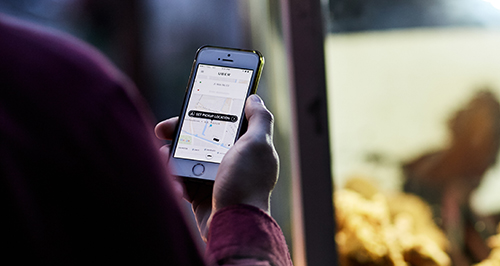Make / Model Search
News - Market Insight - Market Insight 2020Market Insight: The dark side of ride-hailingUnintended consequences: A report by the Union of Concerned Scientists has found ride-hailing journeys are slowing traffic in major cities, increasing average kilometres travelled and harming the environment. Customers abandoning low-impact transport in favour of ride-hailing convenience28 Feb 2020 JOURNEYS using ride-hailing services such as Uber are about 69 per cent more polluting than the travel methods they displace and can increase congestion, according to a report published in the United States by the Union of Concerned Scientists (UCS).
There is also evidence that the convenience of ride-hailing is attracting people who would have otherwise used lower-impact methods of travel such as public transport, cycling, walking – or not travelled at all.
Despite ride-hailing vehicles in the US tending to be more modern and fuel-efficient than the average privately-owned car, UCS estimates ride-hailing trips to generate around 47 percent more carbon dioxide emissions than the equivalent journey in a private car.
At the centre of this disadvantage are ‘deadheading’ kilometres travelled between passenger drop-offs and pick-ups.
Most ride-hailing services offer customers the option to save money by pooling with other travellers going in the same direction, but the inefficiency of deadheading results in these trips still being equally polluting the same journey travelled in a private vehicle.
Switching to electric vehicles can reduce the climate impact, according to the UCS report, which says a non-pooled ride-hailing trip in an EV can cut emissions by about 53 per cent compared with the same journey in an average private car, rising to 68 per cent with pooling.
This puts the per-kilometre climate impact of a non-pooled ride-hailing EV journey lower than that of a bus, while the report estimates that a pooled EV trip is 79 per cent less polluting than a non-pooled, non-EV ride-hailing trip, approaching the efficiency of rail.
In addition to climate and air quality impacts, deadheading adds to congestion by increasing total vehicle kilometres. The UCS report cites a study that found that ride-hailing in urban areas adds approximately 4.2km for each kilometre of personal driving it replaces.
The report points to a 2019 study that found average speeds in San Francisco had dropped from 41.2km/h to 35.7km/h between 2010 and 2016, with half the slowdown attributed to increased use of ride-hailing.
On the east coast, taxi and ride-hailing trips in Manhattan “almost doubled between 2010 and 2017”, according to the report, reducing average speeds in the CBD from 14.6km/h in 2010 to 11.4km/h in this period.
In addition to pollution and congestion, the report lists other negative impacts of rising road use as “noise, crashes, and difficulty in cycling or walking”.
When combined with air quality impacts, these factors harm the health and quality of life of people living close to busy roads, the effects of which the report says are “not distributed equally across racial groups”.
A significant part of the problem is the perceived convenience and value-for-money of ride-hailing services encouraging people away from cleaner forms of transport.
The UCS report cites a survey of ride-hailing customers in California that found 24 per cent of non-pooled journeys would have otherwise used low-impact methods including public transport, walking, cycling or a combination, or that the journeys would not have occurred at all.
Pooled rides displaced even more low-impact alternatives at 36 per cent in the Californian survey. The UCS report points to other surveys, mostly conducted in urban areas, that found “even higher per centages of displaced low-carbon travel modes”.
“For example, a survey of seven cities found that more than half of urban ride-hailing trips displaced cleaner modes (of transport).”
The report makes a number of recommendations for ride-hailing to better integrate with initiatives to address environmental and congestion issues.
Among the measures are maximising the potential of ride-hailing services to displace single-occupant private car journeys by increasing the number of pooled trips made using electric vehicles.
“The ride-hailing industry must take strong action to promote ride pooling, electrify vehicles, and facilitate connections to mass transit,” says the report.
“Governments must provide the public with access to high-quality, multimodal transportation choices, prioritise the movement of people over cars, and ensure that all modes reduce pollution.”
As the ride-hailing industry has emerged from unregulated disruptor to mainstream means of travel, the report recognises the importance of market forces in effecting change for the better.
“Conscientious consumers can help, by making smart trip choices that lessen emissions and traffic congestion and by encouraging companies to offer cleaner options,” it says.  Read more24th of February 2020  Market Insight: What car buyers really wantStudy finds smooth, hassle-free path for buyers brings higher sales conversion rate10th of February 2020  Market Insight: Upward march for Chinese brandsCoronavirus a threat but Chinese-built vehicle sales remain on record pace for now |
Click to shareMarket Insight articlesResearch Market Insight Motor industry news |











Facebook Twitter Instagram